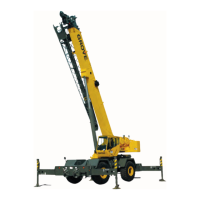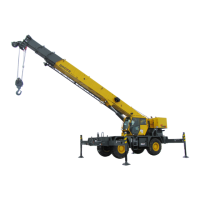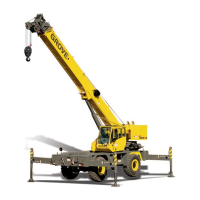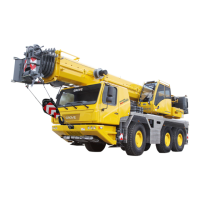INTRODUCTION RT880E SERVICE MANUAL
1-14 Published 11-10-2014, Control # 524-00
1. Inspect both mating parts for burrs, nicks, scratches, or
foreign particles.
2. Lubricate O-ring with a light coat of clean oil.
3. Back off locknut as far as possible (A).
4. Screw the fitting into port by hand until the backup
washer contacts the face of the port and is pushed all the
way towards the locknut (C).
5. To orientate the fitting, unscrew the fitting the required
amount, but not more than one full turn.
6. Hold the fitting in the desired position and tighten the nut
(D) following the F.F.F.T. method starting with step 4.
Nonadjustable Straight Thread O-ring Fitting: Fitting
to Port
Refer to Table 1-5 for the following procedure.
1. Make sure both threads and sealing surfaces are free of
burrs, nicks, scratches or any foreign particles.
2. Lubricate O-ring with clean oil (Figure 1-7).
3. Turn fitting until finger tight.
4. Using the assembly torque method, tighten to given
torque for size from Table 1-5.
Table 1-5: Straight Thread Fittings
Electrical System
Harnesses, Wires, and Connectors
Visually inspect all electrical harnesses, cables, and
connectors every month or 250 hours for the following:
• Damaged, cut, blistered, or cracked insulation.
• Exposed bare wires.
• Kinked or crushed wires and cables.
• Cracked or corroded connectors, battery terminals, and
ground connections.
If any the above conditions exist, evaluate, clean and replace
as necessary.
The climate in which the crane operates affects the service
life of the electrical components. The climate zones are
defined in Table 1-2. Recommended replacement of harness
and cables is as follows:
• Climate zone C after 10,000 hours of service.
• Climate zones A and C with high ambient temperatures
and duty cycles after 8000 hours of service.
• Climate zones D and E after 5,000 hours of service.
• Salt water conditions after 8,000 hours of service.
Fatigue of Welded Structures
Experience has shown that highly stressed welded
structures when repeatedly subjected to varying stresses
caused by twisting, shock, bending, and intentional and/or
unintentional overloads, often become subject to weld
cracking which may be attributed to fatigue of the welded
joint. This condition is not uncommon in construction
equipment.
FIGURE 1-6
Adjustable Fitting to Port
a0030
BACK OFF
NUT
FIGURE 1-7
Non-Adjustable Fitting to Port
a0032
